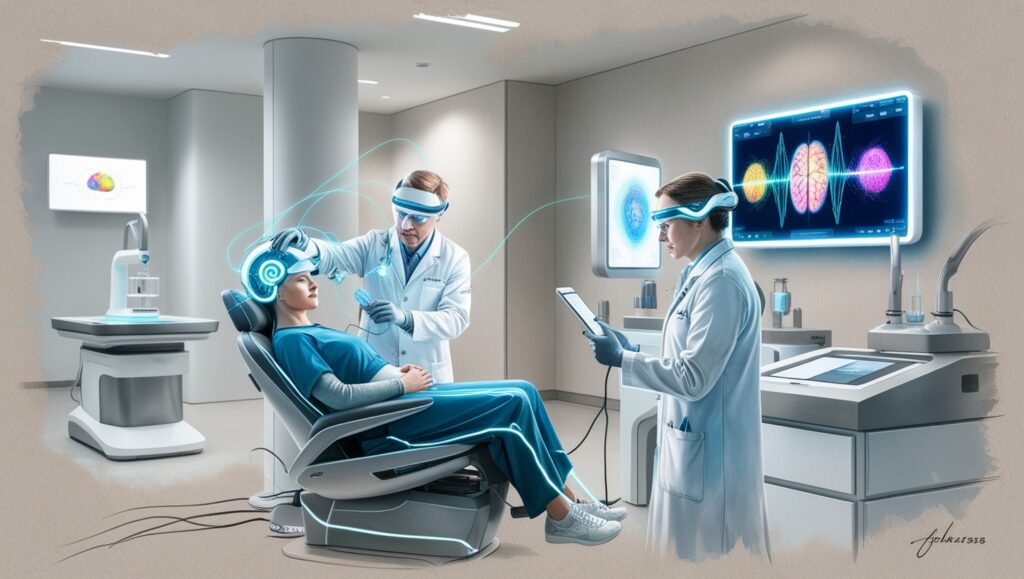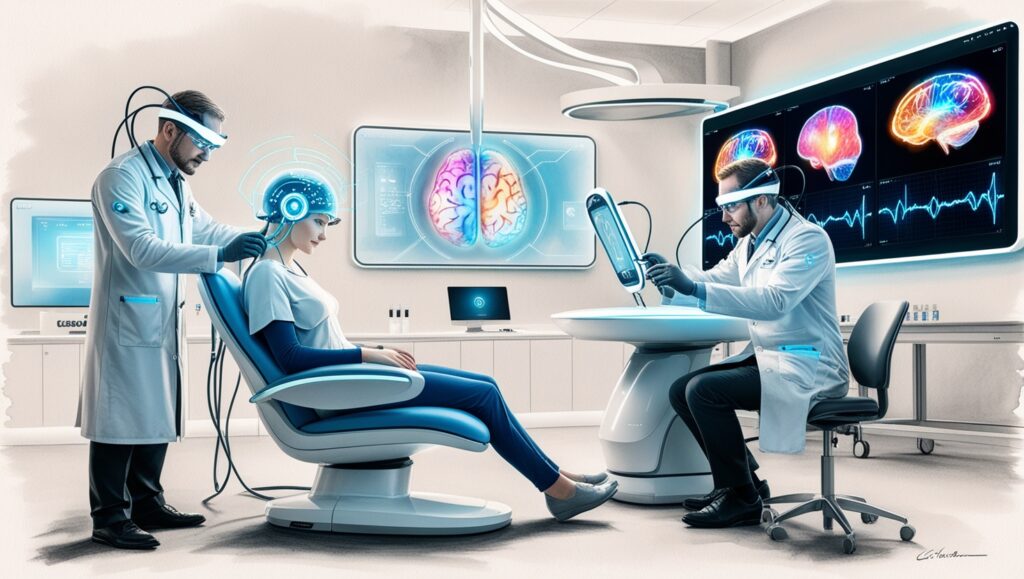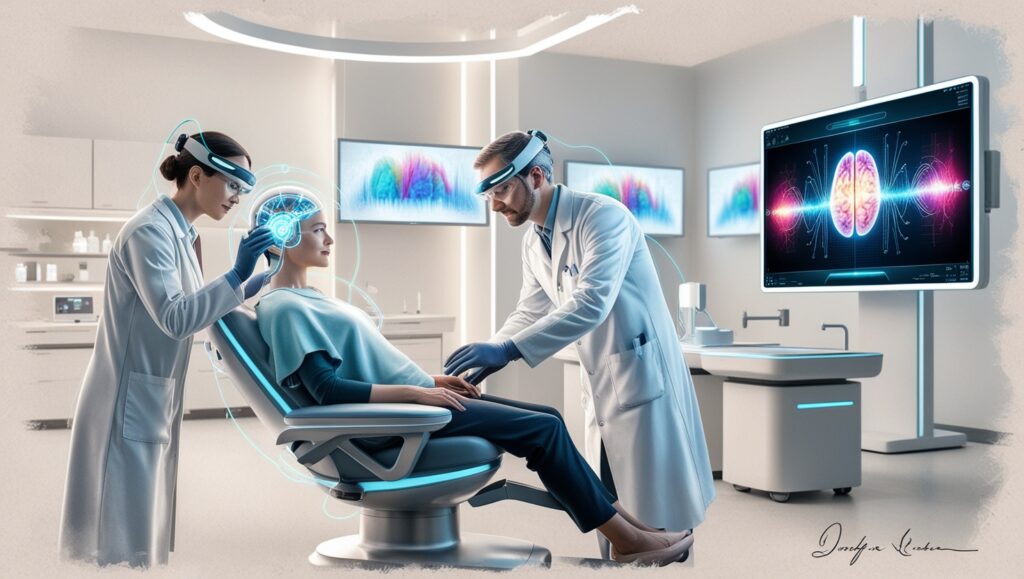Can Quantum Sensors Revolutionize Brain Imaging 2025
Can Quantum Sensors Revolutionize Brain Imaging 2025
Quantum technology is transforming how we understand the world — from computing to cryptography. But in 2025, one of the most groundbreaking applications is emerging in the realm of brain science: the use of quantum sensors to revolutionize brain imaging. In this in-depth exploration, we’ll break down what quantum sensors are, how they work, and why they hold immense promise for neuroscience and medicine.
Understanding the Basics: What Are Quantum Sensors?
Quantum sensors are devices that use principles of quantum mechanics to detect extremely subtle changes in physical systems. Traditional sensors rely on classical physics, which has its limitations in precision. Quantum sensors, however, operate at the subatomic level, making them incredibly sensitive and accurate.
These sensors utilize quantum states such as superposition and entanglement. In superposition, particles can exist in multiple states at once, while in entanglement, particles become interconnected so that the state of one instantly influences the other — no matter how far apart they are.
Because of these quantum properties, quantum sensors can detect incredibly weak magnetic fields, gravitational changes, or even shifts in time — which is what makes them so exciting for brain imaging.
Traditional Brain Imaging: The Limitations
To appreciate the leap forward that quantum sensors represent, it helps to understand the current landscape of brain imaging.
1. Electroencephalography (EEG): Measures electrical activity but lacks spatial resolution. 2. Magnetic Resonance Imaging (MRI): Offers good spatial resolution but can’t track brain activity in real time. 3. Positron Emission Tomography (PET): Provides metabolic data but exposes patients to radiation. 4. Functional MRI (fMRI): Shows changes in blood flow but with limited temporal precision.
All of these tools have strengths, yet none can offer the combination of high spatial and temporal resolution needed to observe the brain’s activity in real time with absolute clarity.
How Quantum Sensors Could Change Everything
Quantum sensors, especially those based on diamond nitrogen-vacancy (NV) centers or atomic magnetometers, can detect changes in magnetic fields generated by neuronal activity. These fields are incredibly weak — often in the femtotesla range — and are difficult to pick up with traditional tools.
Here’s how quantum sensors can revolutionize brain imaging:
1. High Sensitivity: They can pick up on minuscule brain signals, allowing researchers to detect activity from individual neurons or small clusters of neurons. 2. Non-Invasiveness: These sensors can be used externally without the need for surgery or radiation. 3. Real-Time Monitoring: The ultra-fast response of quantum sensors allows for near-instantaneous tracking of brain activity. 4. Portability: Many quantum sensor systems are becoming compact and wearable, meaning brain scans could eventually be done outside of hospitals.
Real-World Applications Already Emerging in 2025
Several laboratories and startups around the world are now working to bring quantum brain imaging into the real world. For example:
- Researchers in the UK have created helmet-based quantum magnetometers that can track real-time brain activity in children with autism.
- Teams in Germany and Japan are integrating quantum sensors into MRI machines to enhance resolution without increasing scan time.
- U.S. biotech firms are building wearable quantum sensors for continuous brain monitoring in patients with epilepsy and Alzheimer’s disease.
These real-world deployments prove that quantum sensors are more than just theoretical tools — they are shaping clinical practice.
Potential Impacts on Neuroscience and Medicine
The fusion of quantum technology and brain imaging could have massive implications:
🧠 Understanding Consciousness: With high-resolution, real-time data, scientists can explore questions like how consciousness arises from neural activity.
🧬 Diagnosing Disorders Early: Conditions like Parkinson’s and Alzheimer’s could be diagnosed years earlier by detecting subtle neuronal changes.
🧪 Precision Medicine: Brain treatments could be tailored to each individual’s unique brain patterns, enabling more effective and personalized therapies.
🧯 Monitoring Brain Health: Athletes, astronauts, and soldiers could wear quantum devices to continuously monitor brain stress, fatigue, or injury.




Ethical Considerations
With any powerful technology comes ethical challenges. If brain imaging becomes portable and highly detailed, who owns that data? How is it stored and protected? Could it be used to monitor emotions or intentions?
These questions will become increasingly important as quantum brain sensors move into mainstream use. Policymakers, technologists, and ethicists must work together to create guidelines that prioritize privacy and informed consent.
Challenges Still Ahead
While the potential is massive, several hurdles remain:
1. Cost: Quantum systems are still expensive to produce and maintain. 2. Stability: Some sensors require controlled environments like cryogenic temperatures, limiting portability. 3. Scalability: Making the technology widely available in hospitals and clinics will require more investment and innovation.
Researchers are actively working on overcoming these barriers. Many believe that within the next 5–10 years, quantum brain imaging could become as common as MRIs are today.
Final Thoughts
Quantum sensors are redefining what’s possible in the field of neuroscience. By allowing us to see the brain in ways never before imagined, they hold the power to revolutionize how we diagnose, understand, and treat mental and neurological disorders. In 2025, we’re standing on the edge of this quantum frontier, watching science fiction steadily turn into science fact.
If this technology matures as anticipated, future generations might look back at the year 2025 as the moment when we first truly began to see — and understand — the mind in motion.
You might also like our blogs:
- What If Quantum Computers Could Simulate an Entire Human Brain?
https://edgythoughts.com/what-if-quantum-computers-could-simulate-an-entire-human-brain-2025 - How Does Quantum Entanglement Work 2025
https://edgythoughts.com/how-does-quantum-entanglement-work-2025
—
External Reference:
Wikipedia – Quantum Sensor
https://en.wikipedia.org/wiki/Quantum_sensor






One Comment